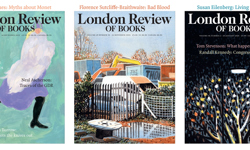Over the last five years, The Student Room - the UK’s most popular education website - has grown its audience rapidly to become one of comScore’s top 150 sites. According to Google Analytics, the site attracts between 5 – 6.5 million unique visitors each month, almost doubling since 2011.
The Student Room is a publisher with social media at its heart, its student audience feeding into all of its content and engagement strategies. Here I’ll talk about the way the business has listened to the audience and increased its pace of change. Both techniques have been critical to success and growing engagement.
It starts and ends with our community
As one of the UK’s big community sites, with over 1.5 million registered members (a 50% increase since 2012), we’re spoilt for feedback. It’s both instant and has a depth of discussion few other platforms provide.
Most social platforms and communication channels like email consist of either short sound bites to many, or longer discussions between the few. Community sites like The Student Room and Money Saving Expert nurture relationships and networks of peers who really care about the platform they use. This depth of discussion is rich with opinion and debate that filters and distils multiple views – sometimes in the thousands - into a focal point, usually reaching a well-informed and accurate consensus.
It’s this attribute of social behaviour found only in online communities that makes them so incredibly popular. As a user, you can build relationships but also, ask any question and receive a variety of well-informed answers.
It’s also this attribute that gives us some of the best feedback available on the net! We’ve recently expanded our community team to four times the size, affording us more time to stop and listen to our user base, incorporating them into every change we make. There’s more to do, but this is a good step.
This has fundamentally shaped our content and engagement strategies, but also many of our customer facing products. Ideas have either come from the audience itself, or have been made far better through their involvement, such as our new notifications menu. Everything we make live has audience input first.
But publishers don’t necessarily need large communities and community teams. They just need an open channel of communication with readers and to make sure the right people in the company are listening to this feedback.
Measure and track everything
A turning point for us came in 2013 when we made the decision never to release anything on site again without ensuring we know how we’re tracking its success. It sounds laborious, but it’s not; in 2014, there is simpler technology available to publishers. Now, we instantly know if something is a success or not whether it’s a news story or a new button.
We also introduced an optimisation team, led by Pete Taylor, our optimisation director, responsible not only for SEO, but also for A/B and multivariate testing prior to launching new developments.
A key concern of mine back at the start was that all of this tracking and data may quash creativity but it’s had entirely the opposite effect. Applying a scientific approach has unleashed the wildest creative ideas that might otherwise have been left on the cutting room floor for being too risky. Think an idea might be too crazy or bold a change? In today’s world, any publisher can test it first to find out and thus avoid throwing out something that might have turned out to be a business changer.
Data now flows through every team to the point of addiction. We know more about our audience than any site I’ve ever worked with before. The more we learn, the more we know what buttons to push and (precisely) when. We’re identifying more formulas for social engagement than ever before, feeding directly into the content and community strategies.
In addition to observation, feedback and audience data, in 2013 we introduced formal research in the form of our Options annual survey, reported by the likes of the BBC. The Options annual report has clearly identified flaws in the education system that we have been able to help highlight through our content strategy.
Content breeds content
In 2012, we made a key hire in the form of our first editor, Nik Taylor, who has been responsible for shaping and building our content offering: both the introduction of professional content and providing structure to our user generated content.
Based on the feedback and information we learn from our audience, we’ve mapped our content around their needs. The more we’ve focused on their needs, the more it has generated discussion and social engagement across our forums.
Thanks to our content team sitting within our community team, it means editorial is constantly connected to data and conversation coming from our audience. So each time we make an article live, it sparks more discussion that generates a further five or six articles.
Although we’re a community site at heart, professional content works beautifully alongside discussion. Very similar to other publishers with their Twitter and Facebook feeds, except our most active social channel is on site.
Design
Something I’m particularly passionate about is the aesthetic of websites (mobile, tablet and desktop) – and let’s be honest, generally, community sites and forums have been behind the rest of the publishing industry in terms of design and presentation. This is rapidly changing.
We’ve placed much emphasis on design including branding projects to define our look, feel and tone of voice. Currently our lead designer, LJ, has been working singlehandedly through our millions of pages to update them. It’s a huge job but I’m proud of what everyone has achieved at updating The Student Room’s design and look so far.
If you compare The Student Room now to the way it looked three years ago, it’s a radical overhaul. The colours are more contemporary, pages decluttered and cleaner. Images and illustrations are starting to play a much larger role, again, something our audience had been crying out for.
The hardest element of our site to modernise has been the forums, where most of the discussion occurs. Forums in particular have been given a bad rep, I believe unfairly, because of the way they look.
This is where we have concentrated our design efforts the most and have seen the big gains in engagement as a result. Large social platforms have grown and forums take less of the limelight but in the background their audiences have been growing around the world.
I predict the continued renaissance of forum or forum-like technology because nothing allows for the same depth of discussion, and I’d encourage other designers to help force through their modernisation.
Mobile
Like everyone else in publishing (I hope!), we adopted a mobile first strategy a while ago, later than we wanted but still ahead of most. Focusing on the core product, we’re working a step at a time to mobile-ise our most popular professional and user generated content.
We already had a growing mobile audience, but adding responsive professional content, forums and private messaging accelerated this growth and engagement on our site (currently sitting at around 40% of our total audience). We’ve since added more advanced interactive features like our Personal Statement builder tool and our University Connect product.
Expanding into mobile also increased our advertising engagement products for clients, which was exciting.
Engagement led advertising products
The Student Room Group’s commercial arm has been growing too, with a knowledgeable sales team. On top of standard advertising display, we’ve been busy crafting unique opportunities for clients.
Thankfully, online display advertising is morphing into a brand led media, as it should have always been used. Like posters, online ads should be used to deliver a message direct to the user without the need for a click (that’s a bonus) – “this new cereal is out”, “places are available on this university course”, “check out our sexy new smartphone”.
That said, online offers more. Recognising this, we began introducing rich engagement products like content microsites and competitions, official rep profiles to interact directly in the community, advertorials with editorial oversight and more.
Community feedback and tracking used to grow the site carries across to the benefit of clients too for optimised campaigns and reporting.
All publishers can learn by tuning into social media
Not every publisher is lucky enough to have its own community – after all, they are a huge expense to monitor and run – but not every publisher needs to. Many of the techniques and strategies we’ve employed are as easily replicated on standard content and by using existing social platforms like Twitter.
I’m sure by now, everyone is already converted to the importance of listening to social media, so my only tip would be to ask the questions: Are you listening often enough? Do you have the right people listening, the ones who can cut through the noise of the loudest users to also hear the quieter ones? Are you tracking the success of everything you launch, whether it’s a news story or interactive feature? Does your company allow mistakes but learn from them at the same time?












